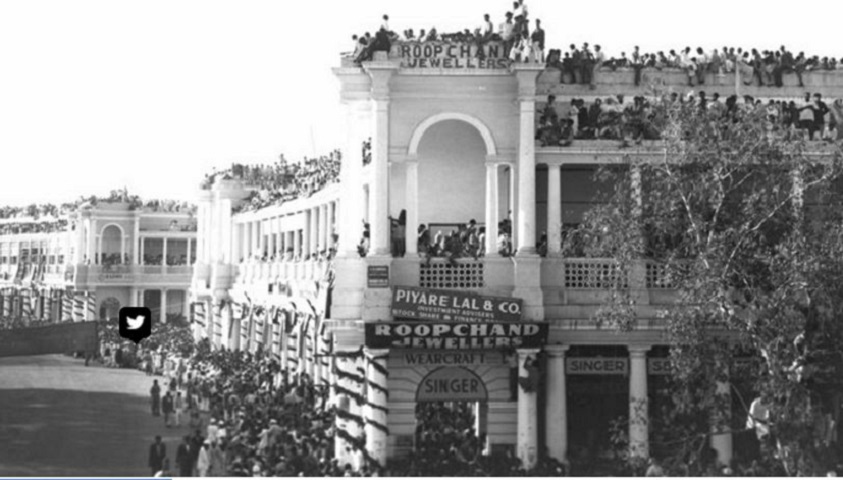Delhi/ New Delhi: A history, Dec. 1911- Aug. 1947
Delhi/ New Delhi: A history, Dec. 1911- Aug. 1947
This is a collection of articles archived for the excellence of their content. |
1931: New Delhi is inaugurated, becomes national capital
HIGHLIGHTS
The British government believed that ruling India from Delhi was easier and more convenient than from Calcutta.
Four million British pounds was the cost of shifting the entire administration from Calcutta to Delhi.
NEW DELHI: It was on February 13 , 1931 that New Delhi became the power capital of undivided India, ending a wait of 20 years.
The foundation of the new capital was laid On December 12, 1911 by King George V during New Delhi durbar (a pompous royal ceremony).
However, it was 20 years later that King George V, during his visit to India, announced that New Delhi will replace Kolkata (then Calcutta) as national capital.
And finally, on February 13, 1931 Lord Irwin inaugurated the new capital - New Delhi.
But why!
Some 100 years ago, then Viceroy of India, Lord Hardinge, said in a letter why the Great Britain should move its empire capital from Calcutta to Delhi.
The letter was sent from Shimla to London on August 25, 1911 and addressed to the Earl of Crewe, Secretary of State for India. Hardinge highlighted the anomaly that the British governed India from Calcutta, an eastern extremity of its Indian properties. Hardinge argued that the rising importance of elected legislative bodies required Britain to find a more centrally located capital.
Partition of Bengal
Calcutta was the literary and the commercial centre of the country. But on October 16, 1905, the British sliced the state into two - Muslim eastern areas and Hindu western areas. The partition, aimed at taking control of the state, under 'divide and rule' policy inflamed nationalist sentiments and lead to a call to boycott all foreign goods. Eventually, bombings and political assassinations took place in Calcutta.
Since Calcutta had now become less than a hospitable place for them, the British were in a rush to leave the city.
Hardinge's plan was approved by the first British monarch, King George V who announced the reunification of Bengal and decided to immediately move the Capital.
20 years!
Shahajanabad (old Delhi) no doubt had been the capital during the Mughal era but it wasn't equipped enough to accommodate the British. As such British architects, Sir Edwin Lutyens and Sir Herbert Baker took the charge of redesigning the new capital.
The new capital was carved out from undivided Punjab province and was named 'New Delhi' in 1927.
Initially, everyone was hoping that the new capital would be ready within four years. But unavoidable events like World War I delayed the process to over 20 years. The war, which imposed stringent funding constraints, affected the construction of the capital of British India.
As they say, swift as an arrow, the British set up a temporary seat of government in Civil Lines. And in 1912, constructed a secretariat building to house government offices while the North and South Blocks were constructed on Raisina Hill in New Delhi.
However, for Edwin Lutyens and Herbert Baker it took another 20 years to complete 'New Delhi' before it could be inaugurated as the capital of undivided India in 1931.
Some more reasons
- One of the reasons for declaring it the capital was that Delhi was the financial and political centre of many empires that had earlier ruled India.
- Another main reason for the capital shift was the location of Delhi. Calcutta was situated in the eastern coastal part of the country, while Delhi was located in the northern part.
- The British government also believed that ruling India from Delhi was easier and more convenient than from Calcutta.
- The announcement was followed by the foundation stone for Coronation Park, Kingsway Camp, which was also the Viceroy's residence.
- Four million British pounds was the cost of shifting the entire administration from Calcutta to Delhi.
- It has been well known that between 3000 BC and the 17th century AD, Delhi was supposed to be the site for a total of seven different cities.
- There were a total of 14 walled gates that protected the city in the beginning. Five of them, including Ajmeri Gate, Lahori Gate, Kashmiri Gate, Delhi Gate, and Turkman Gate are still standing.
Connaught Place was designed as a part of Lutyens Delhi, and is one landmark that defines the capital even after all these decades. This picture was taken when the then Premier of the Soviet Union, Nikolai Bulganin visited India in 1955.
This was Chandni Chowk before all the illegal encroachments made the place an eye sore.
Today, our President travels in snazzy cars. But nothing can beat the classiness of a cavalcade of horse drawn carriages. Here's our first President Dr. Rajendra Prasad in 1950.
See also
Delhi: the Battle of Delhi, 1803
Delhi/ New Delhi: A history, Dec. 1911- Aug. 1947


